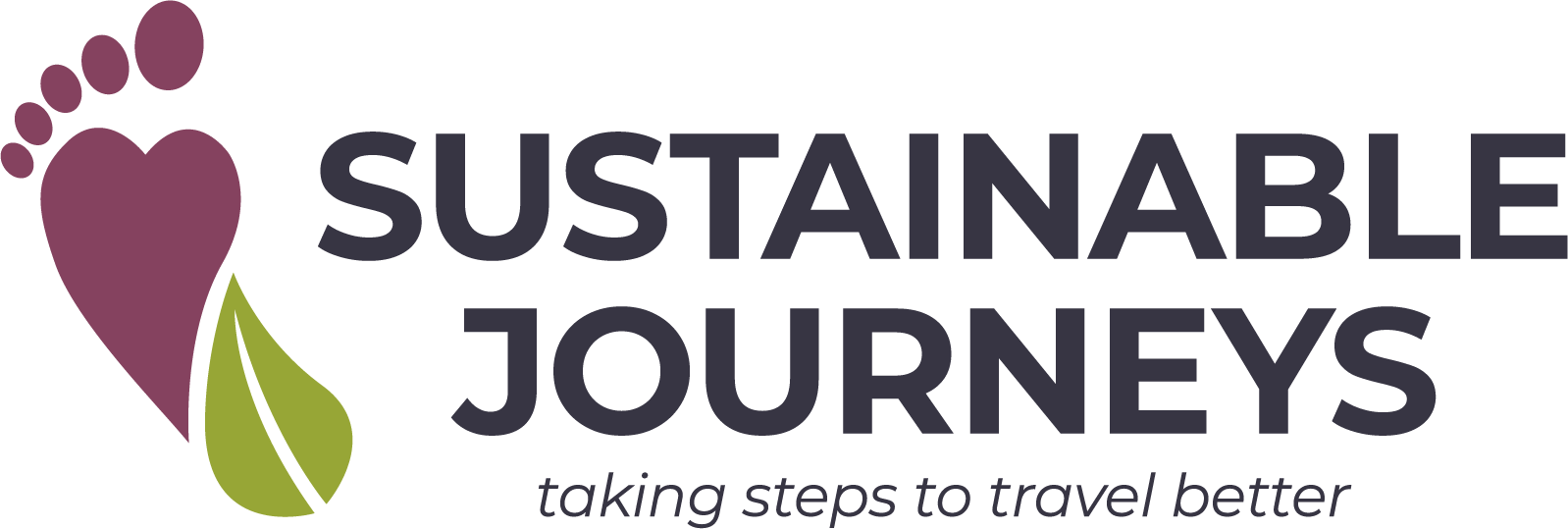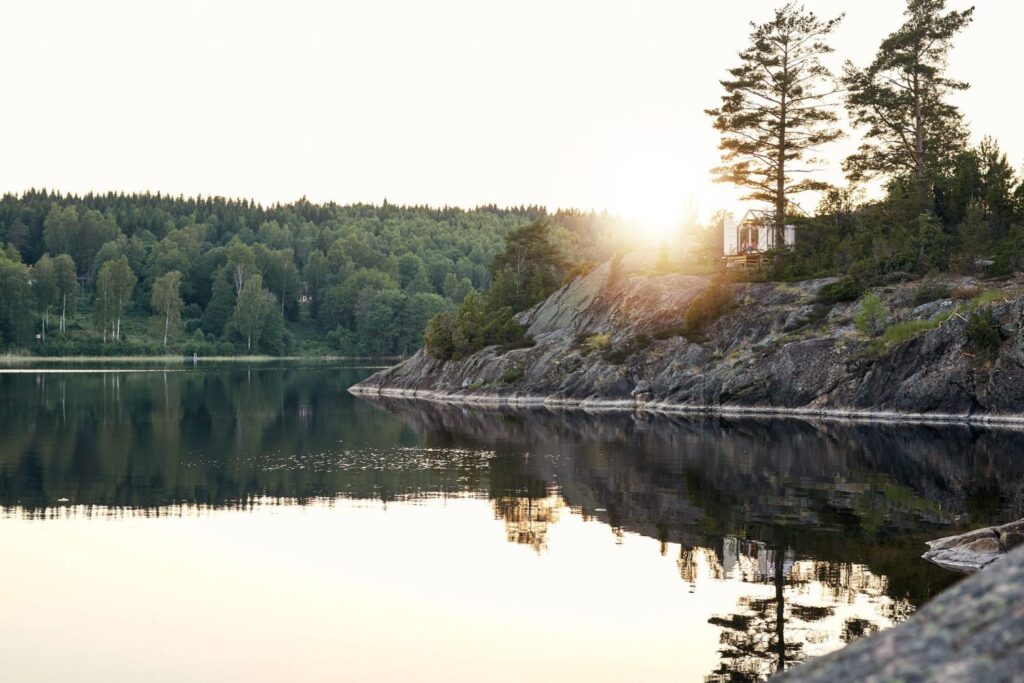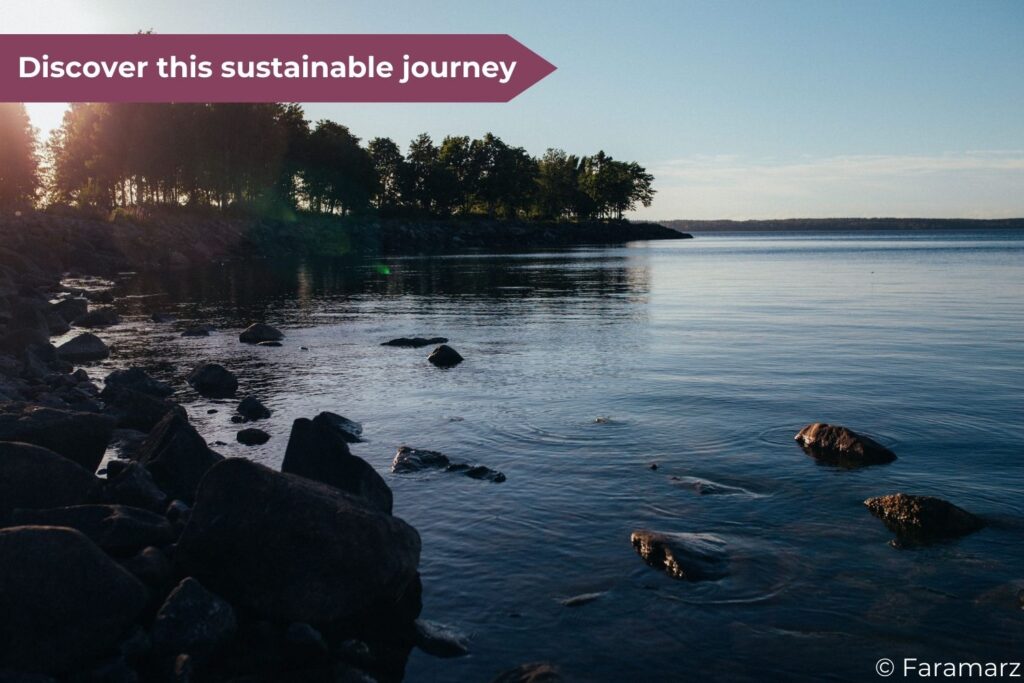By Sarah Baxter
Sitting outside their 19th-century farmhouse, Pia Åkesson and Jesper Persson shared a plate of fresh-baked cinnamon buns and their take on the world. “Sustainability is just our lifestyle,” they explained without fuss or fanfare. “We do it in a quiet way. But we wanted to show there are different ways of living. You don’t have to be a squirrel on a wheel, running for money. We want people to enjoy nature, talk to their neighbours, think their thoughts.”
The couple were being specific. They bought this hillside property in West Sweden’s Platåbergens UNESCO Global Geopark nearly 15 years ago. They’ve since transformed it into Lugnåsberget Ekohotell, a simple guesthouse, around 160km northeast of Gothenburg, that’s green to its core: the buildings were renovated with recycled materials; the food is local, organic and homemade; heating is via a biomass boiler; the power is from solar panels (“We produce more energy than we use,” Pia said).

However, they might have been talking about West Sweden in general. It’s a region of ‘quiet sustainability’; a place with planet consciousness at its heart, where a growing network of businesses is offering climate-smart options to help travellers travel better – and experience more. West Sweden has even created Stepping up Sustainability, an initiative focused on more thoughtful tourism. Its aims are to limit the industry’s environmental impact, encourage visitors to explore a wider range of areas across different seasons, and to create an industry that is beneficial for both locals and tourists.
Lugnåsberget Ekohotell does all those things. Open year-round, and only a few kilometres from the nearest train station, it’s a great base for exploring the surrounding Geopark – both its special geology and fascinating history.
Keen to embark on your own responsible escape? On this 14-day trip, you’ll have the opportunity to visit Hjo, Köpmannebro, and Lake Iväg. You’ll stay in responsible accommodations and visit the iconic Glasets Hus, explore hiking trails, and discover the art of Estrid Ericson.

For instance, because I stayed with Pia and Jesper, l learned about Minnesfjället. One of the old millstone mines dug into Lugnåsberget in the 19th century, Minnesfjället is now a small museum. It’s the sort of place you might miss if you hurried through, focused only on headline-grabbing sites. But it proved extraordinary. It delves into the story of mining the mountain, which dates back 800 years to when Cistercian monks first discovered the rock was perfect for millstones. And it lays bare the hardscrabble nature of the work, which was carried out by the whole community, with men hand-cutting stones, and women and children clearing the water and earth away. But Minnesfjället is also like time travel. Pia took me inside the dark, damp shaft and flashed her torch over fossils of the very first life on earth – strange worm-like and feathery creatures that lived 540 million years ago. Mind-blowing. And important.

Travelling sustainably isn’t just about minimising your carbon footprint – though Lugnåsberget Ekohotell truly excels at that. One night spent here creates just 0.2kg CO2-equivalent per person while the average Swedish hotel creates around 6.8kg, and the average UK hotel 10.4kg. No, it’s also about staying longer, and putting your money into small local businesses that don’t see thousands of visitors. Going to Minnesfjället helps ensure this little-known treasure will continue to share its unique story with future generations. It also inspires local people to appreciate their own heritage. Pia told me that, every summer, local children are trained and paid to run the mine tours and manage the café, giving them life skills, rural employment, a huge boost of confidence and a sense of pride in their region.

Travelling in low season is also a good way to make your visit more sustainable. On my trip, in early September, it was clear tourist numbers had already thinned but the landscape remained spectacular. There was still plenty of greenery on the hills, but in places the trees were beginning to turn, raining yellow-orange confetti onto the quiet walking trails. The forests themselves were sprouting the last of the blueberries, the first of the lingonberries and a forager’s frenzy of mushrooms. On my journey I stayed at the off-grid cabins at Inforest, near the shores of Lake Vättern, and spent an evening around the fire pit, melting slabs of butter and frying up fresh chanterelles while the sky above exploded into a billion stars.
The temperature was mild enough to stay out late. And mild enough, with only a little bravado, to still dip in West Sweden’s endless splatter of lakes – it’s said that the region’s sparsely populated Dalsland province has more than 1,000 of them to choose from. At Dalslands Aktiviteter, a family-run activity centre and glamping site in the heart of the region, I stayed in a glittering glasshouse right by Lake Iväg. Here, on the most perfect September afternoon, sun sparkling off the water like diamonds, I spent almost half an hour swimming about in the refreshing blue. My only company was a couple of ducks; the resident beaver remained elusive.

There are very strict rules about building this close to the water’s edge in Sweden – it’s usually not allowed. Pontus Gyllenberg, owner of Dalslands Aktiviteter, only got permission “because I could bring tourism to the area, which is of great benefit.” He’s passionate about his home, and extraordinary land in which it sits. “I want more opportunities for the countryside,” he told me. “And I want people to experience it – when they see it they want to conserve it.”
The centre originally focused on horse-riding trips but these days you can sign up for everything from canoeing to bushcraft, with some activities available year-round. “We’re always adding something new,” Pontus said.

There are areas of West Sweden where travelling in lower season makes even more sense. For instance, parts of the popular Bohuslän coast simply can’t handle too many more tourists in high summer. Understandably, during those months when the sun barely sets and the weather is perfect for hikes, island-hops, swims and paddles, people surge to its skerry-speckled shores. But the seasonal imbalance and overcrowding means a less enjoyable experience for visitors. And it means a less sustainable proposition for local businesses, who can make more profit and offer more full-time jobs if occupancy is better spread throughout the year.

And why not come in other months? Autumn, for instance, is a beautiful time to visit, with its fiery trees, purple heather and low, golden light. Plus from September to the end of November is lobster season, a period of excitement akin to Christmas. Arguably there’s no better time to pull on a set of oilskins and head out into the archipelago on safari with a local fisherman, helping hoist up the pots before eating the spoils. At Gullmarsstrand Hotell, on the edge of Gullmars Fjord, you can take a lobster safari, warm up in the sauna afterwards, then devour a five-course seafood feast. The hotel’s restaurant is KRAV certified, a Swedish label that ensures the food served is produced without chemical pesticides but with good animal welfare and reduced climate impact. It is also delicious.
And that’s worth saying. Because often ‘sustainability’ is deemed worthy but a little dull. As if by travelling more thoughtfully you somehow have to sacrifice some of the joy. But, actually, travelling outside high season, heading to less-obvious locations and staying at small, family-run places where owners are bursting to share all that’s special about their homes, you get so much more. More for you, more for them, more for the planet.

Feeling inspired? Experience the magic for yourself by booking one of our Sustainable Journeys.
Editorial submission – 14th December 2023









